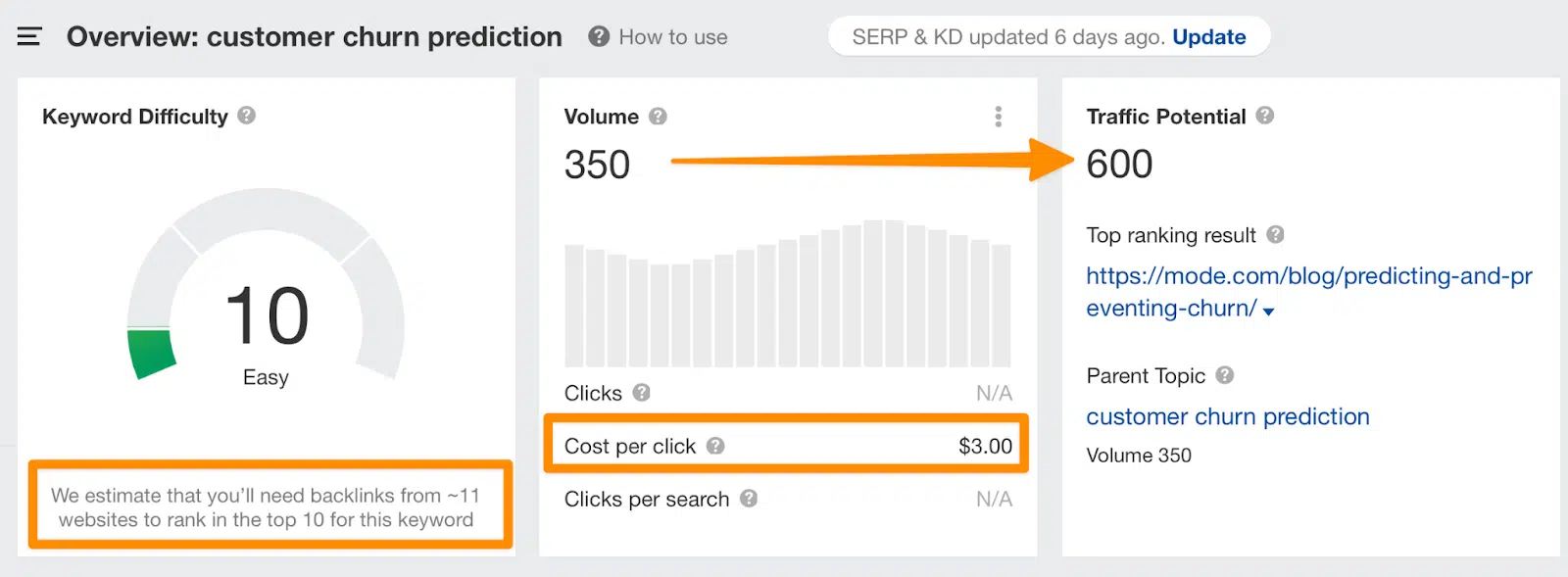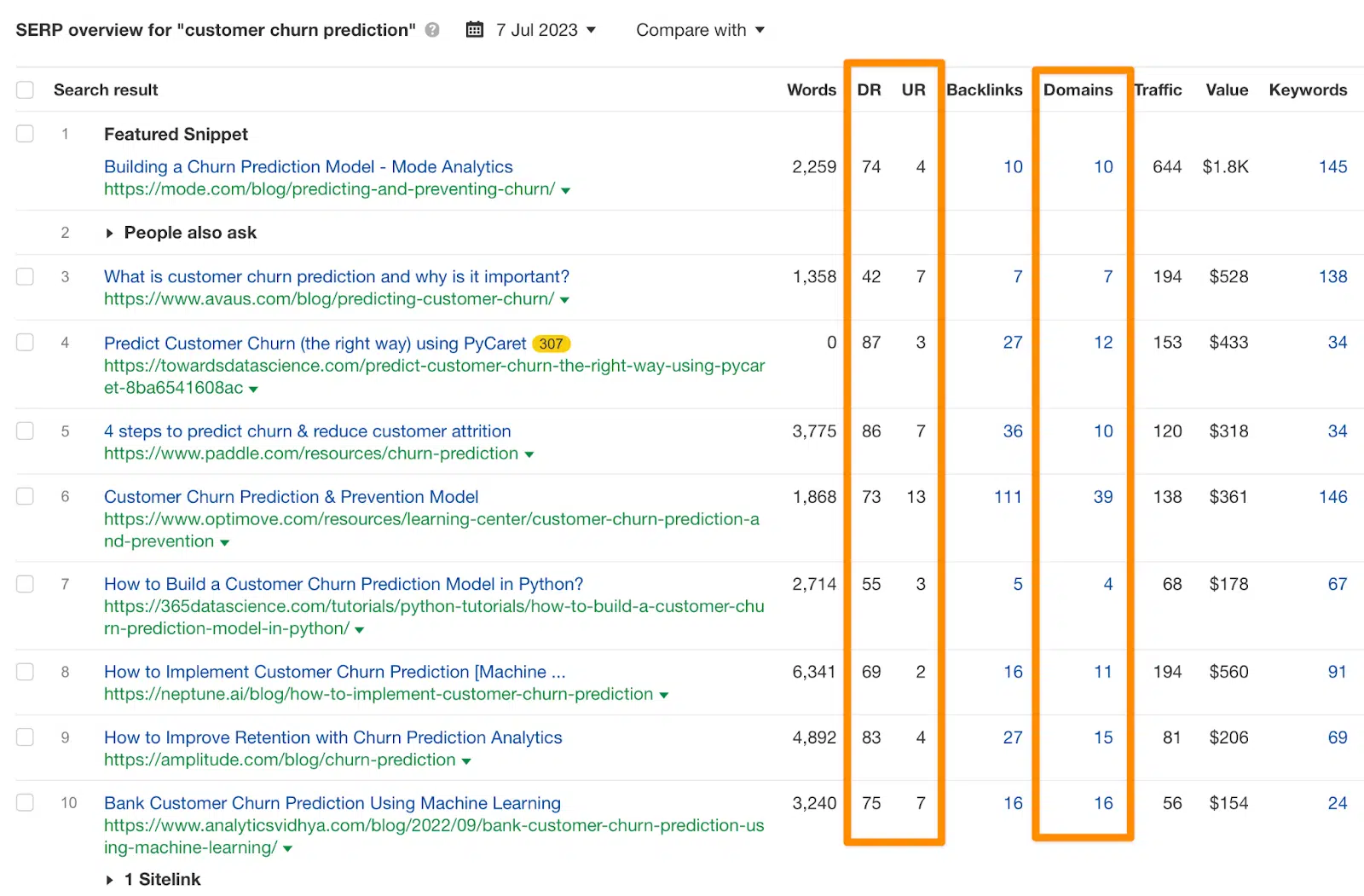How to 10x rankings in competitive spaces using the ‘beachhead principle’
Learn how this military-inspired strategy can help you prioritize keywords wisely and set the stage for long-term SEO success.
Normandy was the beachhead in 1944.
D-Day was the culmination of a successful head fake, surprising the Germans and helping to establish a strong foothold for the Allies to eventually retake France (and the rest of Europe along with it).
Clayton Christenson borrowed the military-inspired “beachhead principle” for his bestselling book, “Crossing the Chasm,” to explain how new products can eventually establish category dominance only after they successfully carve out a foothold with a narrow, well-defined group of early adopters.
SEO is no different, especially today.
It’s never been more challenging, more complex or more competitive.
And to make matters worse, most sites – even established ones – face a Catch-22:
- To rank for good keywords, you need a big site.
- But before you can create a big site, you need to rank for good keywords.
Therein lies the dilemma. Let’s talk about fixing that today.
Why you can’t compete head-on against giant competitors (and what to do instead)
SEO takes a long time.
It’s like a snowball that slowly gathers momentum before finally taking shape months (if not years) down the line.
That means it might look like nothing’s happening on the surface, despite traction slowly but surely building just beneath.
Here’s why.
If ~70-80% of people click on the top ~5 SERP results, everyone outside the top five only sees a tiny sliver of traffic. If any.
But that doesn’t mean progress isn’t being made.
And it’s why your organic search traffic might look consistently flat for months, before leaping up and to the right, literally right off the edge of the page.

The same principle applies to middling sites (think: ~DR 40-60) that compete against industry titans (think: ~DR 90+).
If you ain’t in the top five, you ain’t seeing any results!
So to reliably predict SEO success, you need to start by prioritizing keywords and topics and content pieces that can reliably break into the top five – within a reasonable amount of time.
And for now, ignore or disregard the keywords or topics where reaching top five is difficult.
This, in turn, will allow you to set your sights higher a few months (or years) from now to then go after much bigger categories filled with SEO giants.
David ousted Goliath not by competing directly in a test of brute strength but indirectly – with asymmetric warfare.
You need to do the same thing. Here’s how.
Why your ‘payback period’ should determine which keywords you prioritize
SEO is the best digital investment because results compound.
Done correctly, your investment doesn’t grow 10% per month or become 10% more cost-effective, like PPC ad optimization.
Instead, it 10x’s. Then, it 10x’s again.
The catch?
It takes a long time to get the snowball rolling.
That’s why the most important (yet least discussed) concept for SEO projects is the payback period.
Like any other capital investment, you:
- Invest $X dollars/pesos/yen today, to
- Generate $Y dollars/pesos/yen tomorrow
But…
Instead of only taking days or weeks to produce results (like advertising), you’re looking at months or years. At a minimum.
Mainly because most marketers (and their bosses holding the purse strings) are so busy focusing on lagging indicators – like traffic, leads, and sales – that they miss all the inputs or leading indicators bubbling beneath the surface.

So you can define the payback period into a few easy groups:
- 0-6 months
- 6-12 months
- 12-18 months
- 18-24 months
- 24+ months
And by extension, you can prioritize the keywords/topics and content that you think will deliver short-term results (0-12 months) vs. long-term ones (18-24 months +).
Now, here’s the catch.
Most companies need to balance both at the same time:
Capitalizing on low-hanging fruit to generate some short-term results while laying the groundwork for the more difficult campaigns that will generate a substantial ROI two years from now.

Why are we droning on and on and on about this?
Resource allocation!
‘Cause it’s the single biggest determining factor behind your ability to generate results (or lack thereof).
If you don’t get the long-term vision, direction, budget, and patience to plot this long, winding road, you’ll almost never be able to compete with industry giants long-term.
Meaning you need to:
- Prioritize and establish a beachhead ASAP!
- Leverage quick wins as evidence for proof of concept behind your idea.
- Illustrate to your boss that you need a bigger budget and team to continue rolling the SEO snowball downhill.
- Allow your boss to make a case to their boss that the ROI will be worth it 2+ years from now if you and they are given the time + money to sustain the required marathon.
- Freedom to make autonomous, strategic, long-term decisions without allowing other HIPPOs (highest-paid person’s opinion) to squash your vision before it has a chance to take off.
But the payback period alone won’t determine how fast or slow you can move.
It’s also linked directly with topical authority. This means you will be able to move slowly or quickly.
- Slow: Starting from scratch and need to create topical authority in a category.
- Fast: Kinda/sorta have topical authority and need to continue doubling down to grow it.
- Fastest: Already have topical authority and are ready to dominate.
So if next year’s SEO results depend on this year’s work, then it’s time to get cracking on establishing your beachhead right now.
How to establish your SEO beachhead by going deep and narrow (vs. broad and wide)
Let’s take a random SaaS keyword, like “customer churn.”
Volume looks pretty good, CPC indicates at least some buying intent, and the keyword difficulty looks hard but not impossible.

Please note that keyword difficulty is often biased towards the number of referring domains pointing to each piece of content ranking, and doesn’t always indicate the overall domain strength of the sites ranking.
So an “Easy” KD in your favorite SEO tool could actually be a lot harder to rank for in reality because all those DR 90 sites ranking only have ~10 referring domains each.
Let me illustrate this.
The quantity of referring domains below don’t look that difficult to compete against in theory. However, take one glance over at the average DR of the top ten and you quickly realize this will be an uphill battle.

Yikes.
Seven out of the top ten are DR 90+ sites. Two are mid-to-high 80s, while the last is the only one in the 70s.
So overall, from a domain-level perspective, this keyword is extremely competitive!
Now, let’s say your site’s DR is in the ~50s. Respectable! It’s pretty good.
But not good enough to reliably outrank those competitors in the next few months alone.
That means a few things:
- You can and should work on increasing your own DR…
- Except that will take 12+ months at the absolute minimum to crack 80 or 90,
- So right now, you need to set your sites on easier targets, in order to…
- Eventually come back and rank for “customer churn” ~12-24 months from now.
Making sense so far?
Your near-term strategy, then, should be to create a “customer churn” pillar, with a surrounding cluster of child pages based on easier-to-rank, longer-variation “Terms match” and “Question”-based queries:
Still with me?
Digging into these lists a little more, we can uncover some excellent near-term (again: ~0-12 months) options, like these related keywords for “predicting customer churn.”

A little SERP analysis across all of these will help you quickly see a fair bit of content overlap. You can probably get away with creating one good, in-depth article vs. unique content for each slight variation.
You can further validate this last sentence by looking at the relationship between Traffic Potential and Volume in one of these keywords.
The fact that Traffic Potential is ~2X your Volume typically means overlapping intent between a few closely-related keywords.
Plus, the Keyword Difficulty also looks more palatable on this long-tail variation (“customer churn prediction”).

We can’t stop there. We need to cross-reference the DR ranges again like before.

Voila!
While there’s still some heavyweights in there, you at least have a few competitors in the ~40 – 60 range – falling exactly within your own current weight class.
You can take them on especially if you continue to go deep and narrow, becoming the go-to resource on all things “customer churn” while repurposing or updating existing content to provide a 0-6 month payback period.
After exhausting one defined area, you should think about branching out into other adjacent pillars and clusters.

The reason is that you can leverage topical authority in one area – your beachhead! – to branch out and successfully start taking territory away from others.
Rinse and repeat for months, and those “hard” keywords that used to look difficult now become “much easier” to rank for based largely on your existing topical authority.

Don’t get me wrong.
In most competitive spaces on the web (read: the one you’re probably working in if there’s a lot of money floating around), you’ll still need to create a link building engine in the background.
But the point is the point.
- You establish a beachhead in one fruitful area that’s highly relevant to your core product or service.
- You gain traction on less competitive yet still relevant keywords.
- You slowly go from Page 2 to Position 2, increasing traffic 10X at least across each URL that makes this jump.
- You move the goalposts back, now adjusting your sights on the top spots in the space.
- Only when you have the existing topical authority and site size that make your payback period more palatable (and realistic).
It’s not easy per se.
The pros – the ones doing this repeatedly, over the long haul, proving success across categories or websites – just keep their heads down and continue plugging away.
A former client of mine scaled traffic by over 600% in two years.
No tricks or gimmicks.
They just trusted the process, focusing exclusively on executing month after month, year after year.
And the results took care of themselves.
Delivering SEO results for long-term success
There are often two primary reasons most SEO campaigns fail to deliver results:
- You (or your boss) unrealistically set your sights too high on keywords completely out of your reach (in the near future).
- You (or your boss) pull the plug too early, change direction, and don’t allow enough time to pass to bear fruit.
That’s it!
Simple at the end of the day.
Either you set the wrong targets from the beginning or fail to execute over the long term.
Both are cardinal sins in SEO. Both will sabotage your efforts.
Like losing weight, they’re focusing on the inputs of food they eat, the number of steps they take, etc.
Let compounding do its thing instead of focusing on the outputs, or lagging indicators, like the number of pounds lost on a scale.
Weight loss, like SEO results, goes slowly. And then suddenly.
Months become years. And only then comes success.
